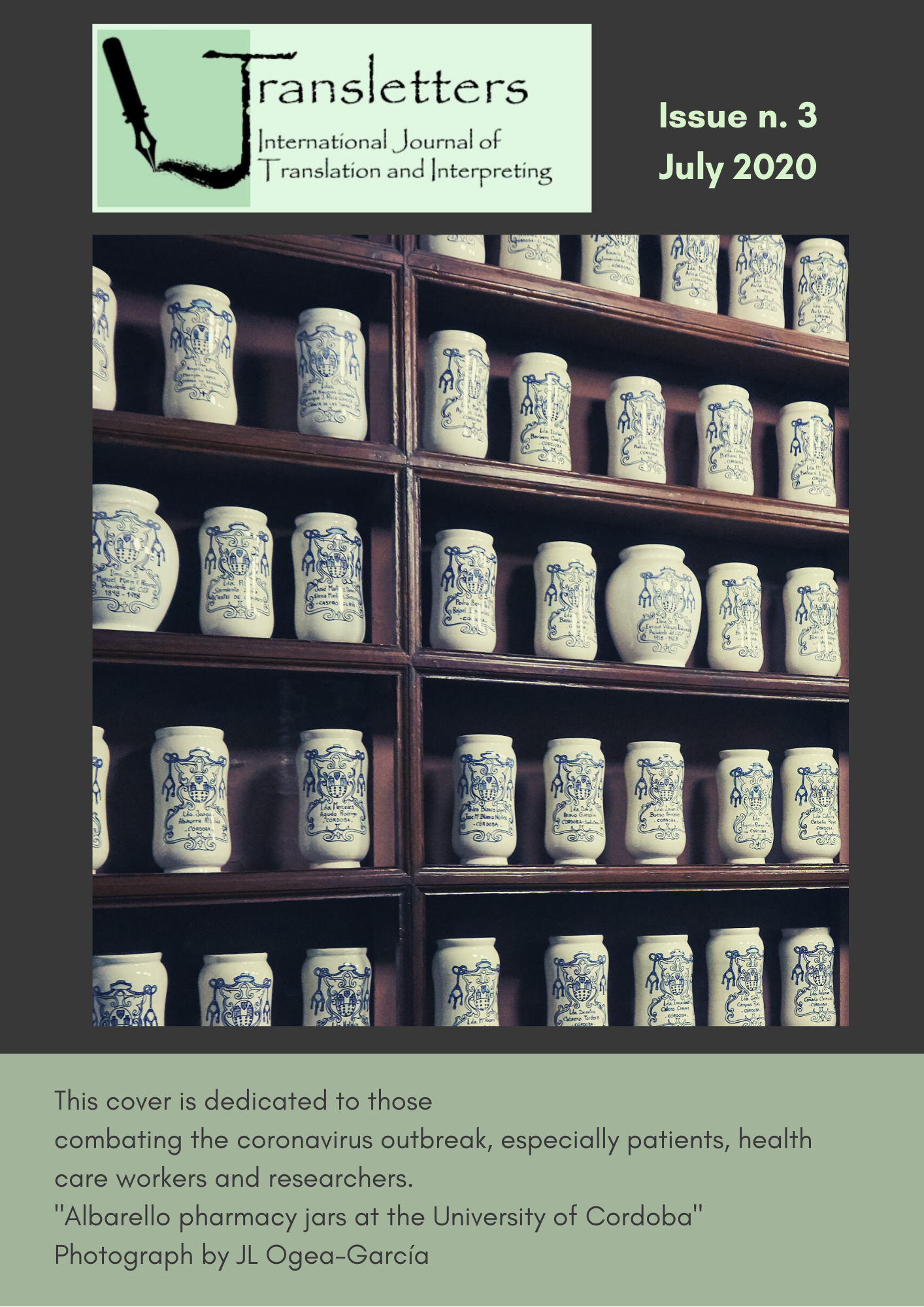The Paratext/Metatext Continuum Walter Benjamin’s “The Translator’s Task” As a Paratext That Is Also a Metatext Within a Network of Nested Textual Manifestations
Contenido principal del artículo
Resumen
Paratexts have been defined as liminal devices that mediate a text to readers, such as titles, forewords, prefaces, etc. However, there’s an inherent open-endedness to their role since they often act as important commentaries on the text, and influence its reception in fundamental ways, thus blurring the distinction between paratexts and critical essays, what Gérard Genette terms “metatexts” (2001: 270). Accordingly, Walter Benjamin’s iconic “The Translator’s Task” is analyzed as a paratext that is also a metatext, along with an essay by Steven Rendall, his most authoritative contemporary translator into English, to show how the interplay between source texts, translated texts, paratexts, and metatexts produces a phenomenological network of nested textual layers, and that absolutist boundaries between paratexts and metatexts create various ambiguities and contradictions that obscure the fact that there is a continuum between these important manifestations of textuality.
Descargas
Detalles del artículo
Política propuesta para las revistas que ofrecen acceso abierto
Los/as autores/as que publican en esta revista aceptan las siguientes condiciones:
1. Los/as autores/as conservan los derechos de autor y conceden a la revista el derecho de primera publicación con el trabajo licenciado simultáneamente bajo una Licencia de Atribución de Creative Commons, la cual permite a otras personas compartir el trabajo con un reconocimiento de la autoría del trabajo y la publicación inicial en esta revista.
2. Los/as autores/as pueden establecer acuerdos contractuales adicionales para la distribución no exclusiva de la versión publicada del trabajo en la revista (por ejemplo, enviarlo a un repositorio institucional), con un reconocimiento de su publicación inicial en esta revista.
3. Se permite y anima a los/as autores/as a publicar su trabajo previo a la versión final publicada en esta revista una vez aceptado (por ejemplo, en repositorios institucionales o en su sitio web), ya que puede dar lugar a intercambios productivos, así como a una citación más temprana y mayor del trabajo publicado (Véase El efecto del acceso abierto).

